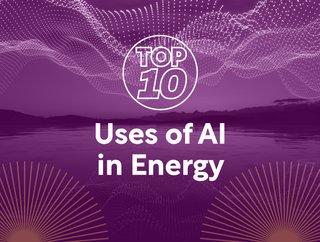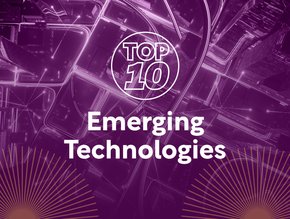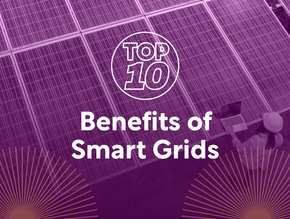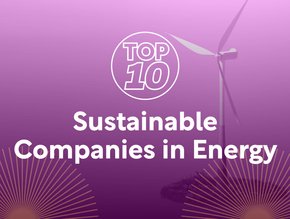
AI has well and truly become a core technology across a multitude of industries, and energy is no different.
Billed ‘the new power couple’ by the International Energy Agency (IEA), AI and energy are increasingly working hand-in-hand with one another to deal with the rising complexities of the industry, with IEA analysts professing that managing the grids of the future will require more powerful analytical tools — a critical role of which is played by AI.
However, the adoption of AI here is by no means without its challenges. Upfront costs and integration niggles are just the tip of the iceberg, for example, with the sensitivity of overall data and professionals to implement artificial intelligence providing additional barriers and layers of complexity.
Despite this, AI holds great future promise for the energy industry. Already key to optimising energy generation, distribution and consumption, this will continue as AI is better trained and becomes smarter. It can, and will continue, to improve the efficiency of renewable energy sources, enhance grid stability and reduce greenhouse gas emissions. And that’s not all. The opportunities here are almost, debatably, endless.
Here, we summarise 10 of the leading ways AI is being deployed in the energy space, and how this is set to evolve as the intelligence develops.
10. Nuclear power plant monitoring
According to IEA data, nuclear power provides around 10% of global electricity generation, solidifying its place as an important low-emission electricity source. AI advancements in nuclear power have helped transform how plants are monitored, with human error slashed and safety overwhelmingly enhanced. “AI, together with other technologies, like digital twins, could decisively boost the efficiency of nuclear power production,” said Nelly Ngoy Kubelwa, a Nuclear Engineer at the International Atomic Energy Agency (IAEA). Machine learning (ML), an application of AI, has been applied in this space for a number of years and has proven useful, with algorithms used for real-time monitoring and predictive maintenance.
9. Oil and gas exploration
AI’s application across the oil and gas sector is widespread. From reservoir analysis to drilling optimisation, anomaly detection to safety monitoring, AI can also reduce emissions in this area, having a revolutionary impact on exploration, production and oil and gas’ overall environmental sustainability.
Consultancy EY says that the application of AI unlocks efficiencies across the oil and gas value chain, including initial exploration activities, and is “inspiring new ways in approaching exploration, development, production, transportation, refining and sales”.
For example, AVEVA optimises upstream operations for performance, safety and sustainability with AI. Its Predictive Analysis platform is powered by AI and, with in excess of 15 years’ experience delivering AI-based predictive analytics at scale, helps industrial users identify asset anomalies weeks or months in advance.
8. Smart homes and buildings
AI has had a transformative impact on reshaping buildings into more energy-efficient environments. For example, smart meters and IoT devices marry together with AI to give real-time insights into consumption, allowing data-driven decisions to be made to optimise energy usage and, in turn, lower operational costs. “AI is a game-changer when it comes to energy efficiency in smart buildings. Through advanced data analysis, predictive algorithms, and real-time monitoring, AI optimises various aspects of building operations, resulting in significant energy savings, reduced costs, and a greener future,” says infrastructure solutions company Utilities One. An IBM Institute for Business Value (IBV) study also shows that 70% of executives it surveyed report that intelligent machines will provide new categories of insight that enhance decision making.
7. Energy trading
When used under the right conditions, AI harbours great potential for energy trading. A recent study by the Fraunhofer Institute for Energy Economics and Energy System Technology (Fraunhofer IEE) says that, thanks to AI, energy trading can become more flexible. In its analysis, AI managed to harness results as well as a human seller. AI can also understand the market’s complex dynamics, processing real-time data on pricing, demand and supply trends. This allows energy companies to make informed and profitable trading decisions.
6. Carbon capture, utilisation and storage (CCUS)
AI-assisted CO₂ capture is able to aid in the optimisation of CO₂ capture and storage from industrial processes and power generation plants. CCUS processes can be elevated by AI, billed a game-changer in this space by AI seismic interpretation software developer Geoteric. A case study report by the company explores the feasibility of using AI networks to rapidly and accurately screen potential CCUS sites, specifically focusing on the Southern North Sea Triassic Bunter Sandstone. The detailed AI fault analysis indicates the selected site has minimal faults, making it a promising location for CCUS purposes. AI-driven systems can identify the most suitable methods for utilising captured carbon, whether for industrial processes or safe long-term storage, playing a vital role in reducing greenhouse gas emissions and mitigating climate change.
5. Energy storage
As a concept applauded for optimisation, in this context AI optimises the storage and distribution of energy from renewable sources. With algorithms monitoring and determining the likes of demand, supply, price and grid conditions, AI can guide businesses as to the best times to store energy, when to release it, and how much to distribute. This is increasingly apparent in more intermittent forms of renewable energy, such as wind, where AI can help guide excess energy generated during peak times to be stored and used when electricity is not being produced.
Speaking during his time as Technical Lead – Energy & IoT, IBM Research Australia, Dr Julian de Hoog, Co-Founder and CEO of Solstice AI advocates for this approach. “In a project with two industry partners, Selectronic, an inverter manufacturer, and Relectrify, a provider of energy storage — funded by the State of Victoria — we learned how batteries, solar panels, inverters and cloud-based services can best be orchestrated to get the maximum possible value out of these kinds of systems,” he said.
4. Renewable energy forecasting
And on the subject of renewable and intermittent sources of energy, AI can help with forecasting when renewable energy is best generated or how much is available at any given time, which in turn allows for more accurate balancing of supply and demand.
VTT Technical Research Centre of Finland’s solution, VTT EnergyTeller, is an AI-powered service for forecasting future energy needs and market developments more accurately. The research and technology company states that, in Finland, a 1% error in wind power forecasting costs roughly €300,000 (US$326,700) a year in imbalance settlements. “We now have more data available than ever,” VTT said. “With the right energy forecasting service, you can leverage the market and grid data to create accurate forecasts. You can use the forecasts to optimise the transition towards renewables and ensure reliable energy availability in any situation.”
3. Predictive maintenance
Staying with the predictive nature of AI, energy companies can predict when their equipment is likely to fail or need maintenance thanks to the capabilities of AI. “Artificial intelligence, in particular machine learning, has given rise to a process called predictive maintenance,” said electric utility company E.ON. “AI can quickly and accurately process and analyse vast amounts of data collected from equipment. It can detect subtle patterns and correlations that may indicate impending failure.”
ML can analyse large amounts of data from various sources to predict potential breakdowns before they occur, minimising downtime, reducing repair costs and improving overall reliability.
2. Demand response management (DRM)
DRM is essential to optimising electricity consumption and securing the grid’s stability by adjusting the electricity usage of consumers in response to signals from operators and providers. By utilising AI, DRM can optimise and control electricity consumption in response to demand fluctuations thanks to its analysis of real-time data. The IEA says as demand response involves providing incentives to shift or shed electricity demand in wholesale and ancillary power markets to help balance the grid, flexibility will become increasingly important as grids become progressively dominated by variable power generation such as wind and solar PV.
1. Smart grids
Smart grid technologies help to coordinate, store and distribute power from such sources into a steady and reliable stream. This is where AI comes in, as predictive analytics means that high-demand strains can be forecasted and distributed to multiple plants and substations, according to SAP. Cloud-connected AI technologies like ML, data analytics and IoT advance the capabilities of smart grids to allow for complex power generation and distribution. “AI, cloud and digital technologies allow all the devices and assets within the grid to communicate, supporting better control and self-regulation,” the multinational software company explained.
*******************
Make sure you check out the latest edition of Energy Digital Magazine and also sign up to our global conference series - Sustainability LIVE 2024.
*******************
Energy Digital is a BizClik brand.






